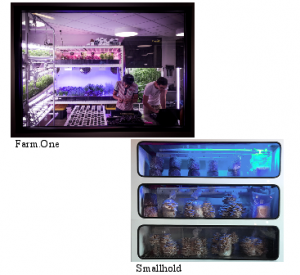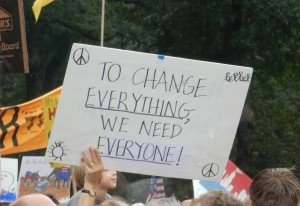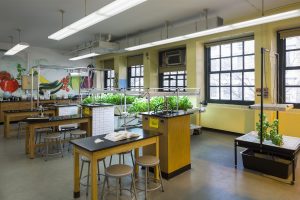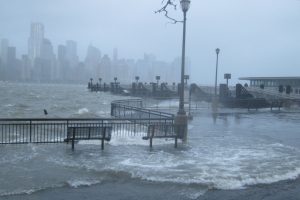Tag: sustainable-design
November 24, 2020
Indigenous Peoples: Centuries of Sustainable Living
By Alexa Roccanova Amidst a convergence of contemporary crises, private and public actors alike have championed sustainability as the ultimate goal for an environmentally, socially, and economically sound future. We’ve witnessed an inundation of seemingly “sustainable” alternatives for products, technologies, lifestyles, and systems that pose only slightly better versions of the status-quo — alternatives that by themselves, without a significant shift in the dynamic of our dominant systems, will not be enough to effectively mitigate climate change. But there exist generations of people who have already been living sustainably for centuries. Indigenous peoples all over the world have been tending to the Earth, conserving local ecosystems, preserving biodiversity, and maintaining their ancestral cosmovisions, knowledges, and practices, despite incessant efforts by colonizer nations and institutions to displace, assimilate, and terminate them. The survival of their communities and lifeways is itself a testament to the sustainability of their culturally and spiritually guided relations with the environment.
“Humankind has not woven the web of life. We are but one thread within it. Whatever we do to the web, we do to ourselves. All things are bound together. All things connect.”– Chief Seattle, Duwamish
(more…)
But there exist generations of people who have already been living sustainably for centuries. Indigenous peoples all over the world have been tending to the Earth, conserving local ecosystems, preserving biodiversity, and maintaining their ancestral cosmovisions, knowledges, and practices, despite incessant efforts by colonizer nations and institutions to displace, assimilate, and terminate them. The survival of their communities and lifeways is itself a testament to the sustainability of their culturally and spiritually guided relations with the environment.
“Humankind has not woven the web of life. We are but one thread within it. Whatever we do to the web, we do to ourselves. All things are bound together. All things connect.”– Chief Seattle, Duwamish
(more…)
May 29, 2018
March Forum Recap: Sustainable Policy 201
by Miaoru Guan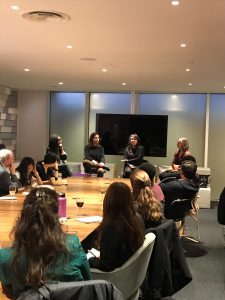 The Sustainable Policy 201 Forum featured four speakers working towards sustainable, affordable housing through diverse but connected roles. Michelle Andry works at New York State Energy Research and Development Authority (NYSERDA), where she focuses on energy efficiency, clean energy, and energy affordability initiatives impacting low-income housing. Francesca Camillo, Project Manager at NYC Department of Housing Preservation and Development (HPD), assists building owners in procuring funding for rehabilitation. Elizabeth Kelly, Manager of Sustainability Programs at The Community Preservation Corporation (CPC), leverages private capital to support sustainable multi-family housing and community revitalization projects. Andrea Mancino is Director of New Construction at Bright Power, and manages team members working on ground-up new construction and commissioning projects.
The panelists discussed how effective policy can encourage wider adoption of sustainable practices in housing by facilitating financing from government sources. For example, to qualify for government funding, new construction and rehabilitation buildings must receive building certification, such as Enterprise Green Communities or LEED certification. Mancino mentioned that achieving certification as an Enterprise Green Community requires buildings to outperform standard building code by 15%. Kelly discussed how these standards help the CPC and private lenders ensure projects have fulfilled a sustainability checklist, reducing the time projects spend in due diligence. Andry added that certified buildings are eligible for NYSERDA grants as well as HPD funding.
(more…)
The Sustainable Policy 201 Forum featured four speakers working towards sustainable, affordable housing through diverse but connected roles. Michelle Andry works at New York State Energy Research and Development Authority (NYSERDA), where she focuses on energy efficiency, clean energy, and energy affordability initiatives impacting low-income housing. Francesca Camillo, Project Manager at NYC Department of Housing Preservation and Development (HPD), assists building owners in procuring funding for rehabilitation. Elizabeth Kelly, Manager of Sustainability Programs at The Community Preservation Corporation (CPC), leverages private capital to support sustainable multi-family housing and community revitalization projects. Andrea Mancino is Director of New Construction at Bright Power, and manages team members working on ground-up new construction and commissioning projects.
The panelists discussed how effective policy can encourage wider adoption of sustainable practices in housing by facilitating financing from government sources. For example, to qualify for government funding, new construction and rehabilitation buildings must receive building certification, such as Enterprise Green Communities or LEED certification. Mancino mentioned that achieving certification as an Enterprise Green Community requires buildings to outperform standard building code by 15%. Kelly discussed how these standards help the CPC and private lenders ensure projects have fulfilled a sustainability checklist, reducing the time projects spend in due diligence. Andry added that certified buildings are eligible for NYSERDA grants as well as HPD funding.
(more…)
March 1, 2018
January Forum Recap: The Green Catwalk
by Jenny Nicolas At the annual GreenHomeNYC Green Catwalk, seven speakers presented the latest information on everything from ventilation to greening the moving industry to O&M to-do lists within the sustainability space. Part 1: Eat, Breathe, Move, & Check Sustainably Changing Our Relationship with Food Ricky Stephens, co-founder of AgTech X, set the stage by presenting some of the biggest flaws within our country’s current food system. He indicated that 80% of the food grown today is not meant for human consumption, with 40% grown to support animals and 40% to be processed into biofuels. Additionally, though the plant kingdom is diverse, 84% of total US cropland is dedicated to just three crops: corn, soybean, and wheat. The long term prospects for the system are also in jeopardy as farming is not attracting new folks to the industry – the average age of a U.S. farmer is 58. What can be done to fix our current system? The goal of AgTech X is to create a new food economy, using urban farming as a vehicle to educate, decentralize, and make farming exciting again. AgTech X fosters a collective community by hosting classes, workshops and tours. Its co-lab workspace supports decentralized urban farming methods like Farm One and Smallhold, indoor farms housed in restaurants that produce farm-to-table microgreens. And a recent “Intro to Aquaponics” class by Oko Farms explained the closed-loop system of raising fish, creating fertilizer for plant growth and filtering the water. While urban farming is not a new concept, innovations in the past five years are making it a more intriguing career option for young professionals! (more…)December 4, 2017
GreenHomeNYC Year in Review: Taking on the Environmental Challenge
by Pamela Berns It’s been a year marked by extreme weather events, with hurricanes, fires, droughts, and flooding all across the globe. In the United States we saw Houston drown and Santa Rosa burn just a few months after Trump’s pullout from the Paris agreement in June. Climate advocacy groups, local policy makers, corporations, entrepreneurs, individuals, and nonprofits all stepped up their game in defense of the planet, and GreenHomeNYC was no exception. Thanks to the dedication of our volunteers, we were able to deepen our commitment to providing education and calls to action. Our speakers and our blog writers shared critical information on local policy, business actions, and academic initiatives. Record numbers of event attendees turned up to hear from innovators in energy, food waste, recycling, and sustainable building. Green careerists came out to find out where to point their compasses in the new paradigm. We’re proud of the hard work that went into this challenging year, and hope that our contributions made a difference. Here are just a few GreenHomeNYC highlights for 2017: (more…)November 28, 2017
November Green Building Tour Recap: Building Towards Resilience
by Brigitta Berze It’s been five years since Hurricane Sandy hit the East Coast, leaving a trail of destruction in the New York area. During the “Building Towards Resilience” Green Building Tours event, Henry Gifford of Chris Benedict R.A., led a tour through 327 and 334 East 8th Street – two Lower East Side buildings that were affected by the hurricane – providing a firsthand look at renovations that were made in the aftermath of the natural disaster.
It’s been five years since Hurricane Sandy hit the East Coast, leaving a trail of destruction in the New York area. During the “Building Towards Resilience” Green Building Tours event, Henry Gifford of Chris Benedict R.A., led a tour through 327 and 334 East 8th Street – two Lower East Side buildings that were affected by the hurricane – providing a firsthand look at renovations that were made in the aftermath of the natural disaster.
The tour began in the noisy basement of 334 East 8th Street, with a description of the damage after Hurricane Sandy, including the conditions that the workers had to endure. The elevator in this building is not counteracted by weights to lift the elevator car, but instead uses oil mixed with other chemicals in a hydraulic elevator machine. As the water rose to about six feet above the basement floor, the oil and chemicals mixed with the flood waters, creating a hazardous condition for workers. The slippery mix of oil, water and sewage caused the superintendant to get a foot infection that landed him in the hospital for three days.
(more…)September Forum Recap: Spotlight on Hudson Yards
by Jennifer Urrutia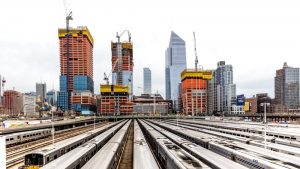
Photo source: ny.curbed.com
November 27, 2017
October Forum Recap: Women of Green
by Claire Brown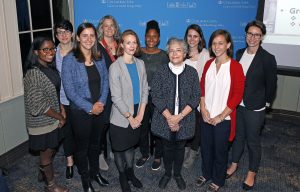 During GreenHomeNYC’s October Forum, eight women of green led us on a tour of their green building career paths. Through the Pecha Kucha style of presentation, the speakers used timed-slides to guide us through their search for their dream careers in engineering, sustainable design, new construction, and more. In addition to sharing their stories, the speakers offered advice to those seeking green careers. The forum was co-hosted by GreenHomeNYC and the Center on Global Energy Policy’s Women in Energy program at Columbia University.
During GreenHomeNYC’s October Forum, eight women of green led us on a tour of their green building career paths. Through the Pecha Kucha style of presentation, the speakers used timed-slides to guide us through their search for their dream careers in engineering, sustainable design, new construction, and more. In addition to sharing their stories, the speakers offered advice to those seeking green careers. The forum was co-hosted by GreenHomeNYC and the Center on Global Energy Policy’s Women in Energy program at Columbia University.
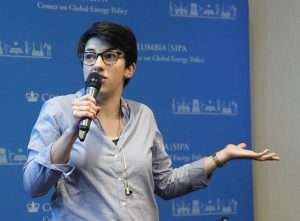 Lucie Dupas, Entersolar
Dupas had engineering built into her genetic blueprint, with both of her parents working as IT engineers. She finished her formal education in engineering by completing a Master’s program in France, and was proud that the program was comprised of roughly 42% women. Surrounded by so many women in her field, she felt that being a female engineer was “the normal thing to do.” In search of her dream internship, Dupas moved to New York City and joined a renewable energy consulting startup at the NYU Poly Acre Incubator where she built her first photovoltaic system. The internship ultimately led to a full-time job at Sollega, a solar equipment manufacturer where she did “all the things that you think an engineer does”. According to Dupas, “I did a 3-D design of a racking part and tested it in a laboratory and I trained some 200 pound electricians.” Next she worked at Bright Power, where she helped bring solar power to affordable housing and managed the installation of several solar thermal and photovoltaic systems. She is now the Engineering Director at the nationwide solar installer Entersolar where she works on commercial projects with a specific focus on solar PV technology. Lucie is an avid proponent of training programs. “You know how you think you know something, but then you go through a certification program and you realize there’s so much that you don’t really know. And having the certification on your resume is so useful to show yourself as an expert in the industry.”
(more…)
Lucie Dupas, Entersolar
Dupas had engineering built into her genetic blueprint, with both of her parents working as IT engineers. She finished her formal education in engineering by completing a Master’s program in France, and was proud that the program was comprised of roughly 42% women. Surrounded by so many women in her field, she felt that being a female engineer was “the normal thing to do.” In search of her dream internship, Dupas moved to New York City and joined a renewable energy consulting startup at the NYU Poly Acre Incubator where she built her first photovoltaic system. The internship ultimately led to a full-time job at Sollega, a solar equipment manufacturer where she did “all the things that you think an engineer does”. According to Dupas, “I did a 3-D design of a racking part and tested it in a laboratory and I trained some 200 pound electricians.” Next she worked at Bright Power, where she helped bring solar power to affordable housing and managed the installation of several solar thermal and photovoltaic systems. She is now the Engineering Director at the nationwide solar installer Entersolar where she works on commercial projects with a specific focus on solar PV technology. Lucie is an avid proponent of training programs. “You know how you think you know something, but then you go through a certification program and you realize there’s so much that you don’t really know. And having the certification on your resume is so useful to show yourself as an expert in the industry.”
(more…)
November 2, 2017
Growing Trend: Sustainable Science in New York City Schools
by Megan Nordgrén While the federal government currently eschews all mention of climate change, more and more New York City schools are embracing sustainability education. One such opportunity for a solid STEM (Science, Technology, Engineering and Math) program is turning students into urban farmers, as they learn the mandated science standards. The Greenhouse Project is the brainchild of New York Sun Works, a small non-profit that builds innovative hydroponics laboratories or state-of-the-art greenhouses in schools. Students learn about sustainable urban farming through project-based learning that emphasizes climate change education. This hands-on approach extends knowledge by connecting concepts such as water resource management, efficient land use, climate change, conservation, contamination, pollution, waste management, and sustainable development. NY Sun Works’ inaugural project was The Science Barge, a sustainable urban farm prototype and education center on the Hudson River. It was the only fully functioning demonstration of renewable energy supporting sustainable food production in New York City. A second project, the Sun Works Center (PS333), was completed in 2010. It provides K-8th grade students with hands-on exposure to food production paired with rigorous science education. As the first year-round rooftop farm to exist at any New York public school, the Sun Works Center is considered an educational and environmental landmark by the NYC Department of Education and School Construction Authority. (more…)April 28, 2017
Living Building Challenge: Designing for an Equitable and Regenerative Future
by Sunitha Sarveswaran Have you ever considered how a flower functions? It lives off the resources available to it, using the sun, water and soil in its immediate surroundings to thrive. It also provides a service to its surrounding environment, in the way of food, shelter and aesthetic beauty. This is what a building following the Living Building Challenge® certification is designed to emulate.
Living Building Challenge (LBC) was created by the Cascadia Green Building Council in 2006. It was born from the concept that a building should not only be energy efficient, but also have a positive impact on its residents and the community. Buildings that take on the Challenge go above and beyond typical high performance buildings. The aim of LBC is to reduce the energy and water footprint of a building down to the amount it can produce on site. In addition, LBC asks buildings to connect residents and communities with healthy, beautiful and renewing environments. These are very tall orders!
(more…)
Have you ever considered how a flower functions? It lives off the resources available to it, using the sun, water and soil in its immediate surroundings to thrive. It also provides a service to its surrounding environment, in the way of food, shelter and aesthetic beauty. This is what a building following the Living Building Challenge® certification is designed to emulate.
Living Building Challenge (LBC) was created by the Cascadia Green Building Council in 2006. It was born from the concept that a building should not only be energy efficient, but also have a positive impact on its residents and the community. Buildings that take on the Challenge go above and beyond typical high performance buildings. The aim of LBC is to reduce the energy and water footprint of a building down to the amount it can produce on site. In addition, LBC asks buildings to connect residents and communities with healthy, beautiful and renewing environments. These are very tall orders!
(more…)

